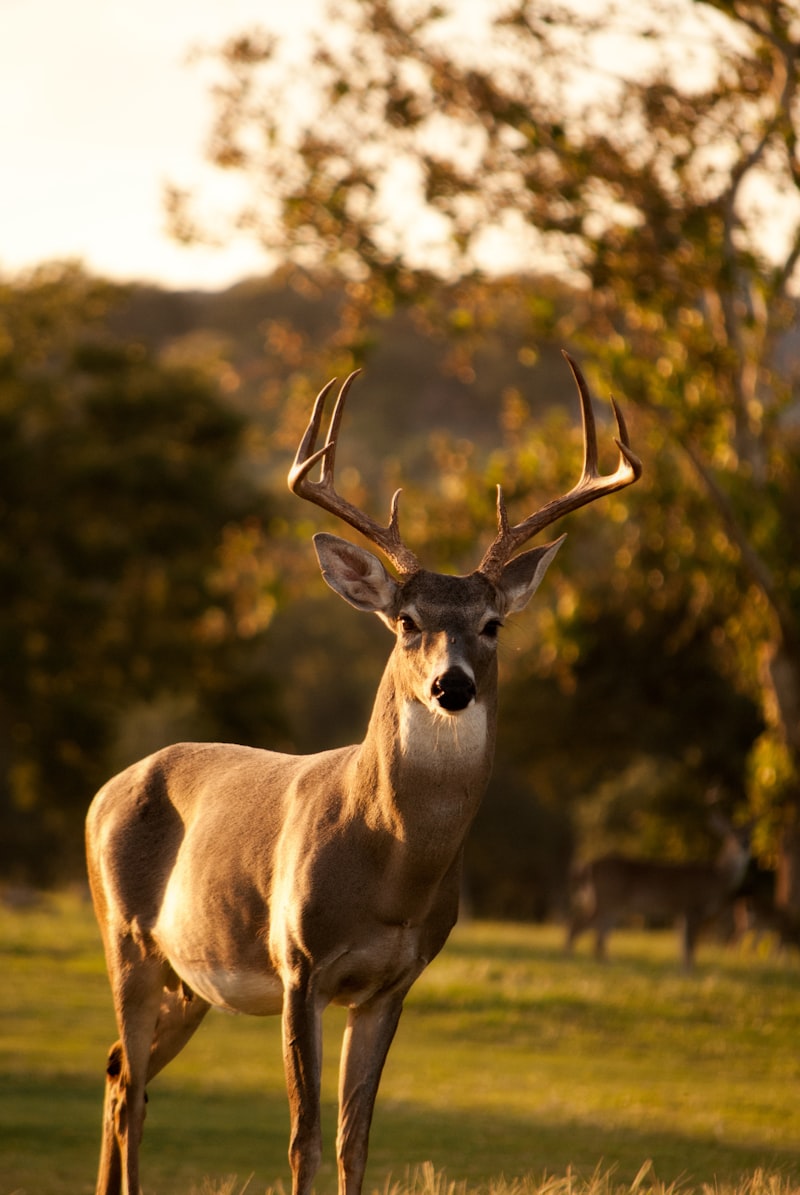Have you ever wondered about the strange and unexplained behaviors of animals? Nature often presents us with mysteries that defy easy explanation. From birds mysteriously falling from the sky to fish gathering in massive numbers seemingly out of nowhere, these phenomena capture our curiosity and fascination.
One of the most perplexing examples is the migration patterns of certain species. How do animals like monarch butterflies and Arctic terns navigate thousands of miles across continents without getting lost? Scientists have theories involving magnetic fields and celestial cues, but the exact mechanisms remain a mystery, adding to the allure of these natural wonders.
Another puzzling phenomenon is animal mass strandings. Dolphins, whales, and even some species of fish occasionally beach themselves en masse, with no clear reason why. Could it be illness, disorientation, or some other unknown factor driving these events? Researchers continue to study these incidents to uncover patterns and potential causes.
Then there are instances of animals displaying unusual intelligence or behaviors. Octopuses, for instance, are known for their problem-solving skills and ability to escape from seemingly secure enclosures. What drives these creatures to such feats of intelligence remains a subject of ongoing research and speculation.

Nature’s mysteries remind us of how little we truly understand about the world around us. Each unexplained phenomenon invites us to delve deeper into the complexities of animal behavior and the natural environment. They challenge our perceptions and inspire a sense of wonder at the diversity and unpredictability of life on Earth.
This article aims to capture the intrigue and wonder surrounding unexplained animal phenomena while engaging the reader with vivid examples and thought-provoking questions.
Glowing Mushrooms and Fireflies: Illuminating Nature’s Mysteries
Glowing mushrooms, also known as bioluminescent fungi, emit a soft, ethereal light that illuminates the dark forest floor like tiny lanterns. This natural phenomenon occurs due to a chemical reaction within the mushrooms involving luciferin and luciferase enzymes. Found in various species around the world, these mushrooms create an otherworldly atmosphere, often glowing brighter on humid, moonless nights.
Similarly, fireflies, or lightning bugs, light up summer evenings with their bioluminescent abdomens. These insects use light production as a means of communication, attracting mates with their unique flashing patterns. Each species of firefly has its own distinct flash pattern, creating a mesmerizing display during warm evenings in fields and forests.
The bioluminescence of mushrooms and fireflies serves multiple purposes in nature. For mushrooms, it may attract insects to aid in spore dispersal or act as a warning signal against potential predators. Fireflies use their flashes primarily for mating rituals, where males and females communicate through specific flash patterns.
Beyond their biological functions, the glowing mushrooms and fireflies evoke a sense of wonder and curiosity among those who witness them. Their gentle lights contrast against the darkness, reminding us of the intricate beauty and diversity of life on Earth.
Exploring these natural light shows reveals the interconnectedness of organisms within their ecosystems. From the silent depths of a forest to the buzzing meadows at dusk, these luminous creatures remind us of nature’s ability to surprise and inspire, offering a glimpse into the delicate balance of life.
As we continue to uncover the mysteries of glowing mushrooms and fireflies, their enchanting displays serve as a reminder of the wonders yet to be discovered in the natural world.
The Enigma of Animal Migration: Unraveling Nature’s Navigation Secrets
Imagine a scenario where tiny songbirds embark on a journey spanning thousands of miles, guided solely by instinct and celestial cues. These avian travelers utilize Earth’s magnetic field and stars as their compass, a celestial GPS system honed through generations of evolution. Each flap of their wings propels them towards distant destinations, overcoming natural barriers with a determination akin to human wanderlust.
Similarly, marine creatures like whales and fish undertake epic migrations, driven by the need to spawn, feed, or seek warmer waters. Their routes, often spanning entire ocean basins, are mapped not by road signs but by the subtle shifts in temperature and ocean currents. It’s as if they navigate an underwater highway, relying on environmental cues encoded in their genes over millennia.
What makes these journeys even more awe-inspiring is their precision. Migratory animals return to the same breeding grounds or feeding grounds year after year, often with astonishing accuracy. For example, the Arctic tern travels from pole to pole, covering about 50,000 miles annually, ensuring it follows summer across both hemispheres. This feat requires an innate sense of direction that rivals any human-made navigation system.
Yet, the mystery of animal migration isn’t just about navigation—it’s also about survival. These journeys are perilous, fraught with predators, climate challenges, and human-made obstacles like habitat destruction and pollution. Understanding the intricacies of migration isn’t merely a scientific curiosity; it’s crucial for conservation efforts aimed at preserving these marvels of natural engineering.
In unraveling nature’s navigation secrets, scientists delve into a world where instinct meets adaptation, where each journey is a testament to the resilience and adaptability of life on Earth. As we uncover more about how animals navigate vast distances with pinpoint accuracy, we gain a deeper appreciation for the interconnectedness of species and the importance of preserving their habitats.
Cryptic Creatures of the Deep Sea: Ghostly Denizens Beyond the Light
Imagine a realm where ghostly forms glide through the black waters, their translucent bodies illuminated by bioluminescence like eerie lanterns in the abyss. These creatures, adapted to survive in extreme conditions of pressure and cold, challenge our understanding of life on Earth.
One such marvel is the anglerfish, a predator with a bioluminescent lure dangling in front of its toothy maw. This lure, glowing like a beacon, attracts unsuspecting prey in the darkness, showcasing nature’s ingenious adaptations for survival in a harsh environment.
Then there are the gulper eels, with their distensible stomachs capable of swallowing prey much larger than themselves. Their elongated bodies and massive jaws create a formidable silhouette against the faint glow of deep-sea bioluminescence.
Among the most ethereal inhabitants are the comb jellies, delicate creatures that drift through the water like living galaxies. Their iridescent bodies refract light into mesmerizing displays of color, evoking a sense of otherworldly wonder.
These ghostly denizens of the deep sea, with their alien forms and survival strategies honed over millennia, remind us of the boundless diversity of life on our planet. They thrive in a realm where few organisms can survive, relying on instinct and adaptation to navigate a world perpetually shrouded in darkness.

Exploring the cryptic creatures of the deep sea offers a glimpse into a realm where reality blurs with imagination, where nature’s creativity knows no bounds. It prompts us to question what other mysteries lie hidden beneath the waves, waiting to be discovered and marvelled at.
Unsolved Riddles of Animal Intelligence: Nature’s Brainiacs
Consider the awe-inspiring feats of the octopus, an underwater marvel known for its ability to navigate mazes and unscrew jars to access food—a testament to its problem-solving prowess. Equally fascinating are elephants, with their exceptional memory that aids in long-distance migrations and recognition of individuals within herds, displaying a level of cognitive sophistication akin to our own.
But it’s not just larger animals that astound. Take the tiny but mighty honeybee, famous for its intricate “waggle dance” which communicates precise directions to food sources to fellow hive members. This dance, a symbolic language in itself, underscores the depth of social intelligence among these industrious insects.
Delve deeper into the oceans, and you’ll encounter the complex vocalizations of whales, echoing across vast distances to communicate with their pod members. These underwater symphonies hint at a level of communication and social cohesion that rivals even some human societies.
As we unravel these unsolved riddles of animal intelligence, each discovery opens new doors to understanding the intricate workings of nature’s brainiacs. How do they learn, adapt, and communicate? What parallels can we draw between their cognitive abilities and our own? These questions challenge us to rethink our place in the web of life, where intelligence takes many forms and continues to surprise us with its diversity and complexity.
Nature’s Acoustic Puzzles: The Mysterious Songs of Whales and Birds
Imagine standing on a quiet beach, where the only sounds you hear are the gentle lapping of waves and the occasional call of a seabird. Suddenly, from the depths of the ocean or the heights of the sky, you hear a hauntingly beautiful melody—a song that seems to defy the very essence of nature itself. These are the mysterious songs of whales and birds, nature’s acoustic puzzles that have fascinated scientists and enthusiasts alike for centuries.
Whales, the gentle giants of the sea, are known for their complex and eerie songs that resonate through the ocean depths. These songs, often described as a series of moans, cries, and clicks, can travel for thousands of miles underwater. Scientists believe that these melodies serve various purposes, from mating rituals to communication across vast distances. Each whale species has its own unique song, passed down through generations and evolving slowly over time.
Birds, on the other hand, fill the skies with a symphony of chirps, whistles, and trills. From the melodious nightingales to the haunting calls of the loon, bird songs are as diverse as the species themselves. These songs are not just random sounds; they play crucial roles in avian life, including attracting mates, defending territory, and warning of predators. Some bird species, like the mockingbird, are even capable of mimicking the calls of other birds and environmental sounds with astonishing accuracy.
What makes these songs so mysterious is not just their beauty, but also their complexity and purpose. Whales and birds have evolved these songs through millennia of natural selection, adapting them to their environments and social structures. Studying these acoustic puzzles provides insights into animal behavior, ecology, and evolution, offering a glimpse into the intricate web of life on our planet.
As scientists continue to unravel the secrets of these songs, new questions arise. How do whales produce such low-frequency sounds that can travel thousands of miles? What drives birds to sing with such passion and precision? And perhaps most intriguingly, what can these songs tell us about the natural world and our place within it?
Nature’s acoustic puzzles, the mysterious songs of whales and birds, remind us of the beauty and complexity of life on Earth. They challenge us to listen more closely, observe more keenly, and appreciate the wonders that surround us every day.
Frequently Asked Questions
What are some famous examples of unexplained animal behaviors?
Discover notable instances of unexplained animal behaviors, showcasing fascinating phenomena like the migration of monarch butterflies across continents, the synchronized flashing of fireflies, and the navigation abilities of homing pigeons over vast distances.
What theories attempt to explain unusual animal migrations?
Explore theories that explain unusual animal migrations, from environmental cues like geomagnetic fields and celestial navigation to adaptive advantages such as accessing food resources or avoiding predators.
Why do some animals exhibit behaviors that defy scientific explanation?
Some animals exhibit behaviors that defy scientific explanation due to complex evolutionary adaptations or environmental influences not yet fully understood by researchers. These behaviors challenge our current understanding of animal cognition and instincts, prompting ongoing study to unravel their underlying mechanisms.
How do scientists investigate mysterious animal phenomena?
Explore how scientists investigate mysterious animal phenomena through systematic observation, data collection, and rigorous analysis. They employ specialized techniques such as remote sensing, DNA analysis, and behavioral studies to unravel the mysteries of animal behavior, migrations, and adaptations.
Are there documented cases of animals displaying paranormal abilities?
Discover fascinating cases where animals have exhibited paranormal abilities, exploring documented evidence that sheds light on this intriguing phenomenon.


